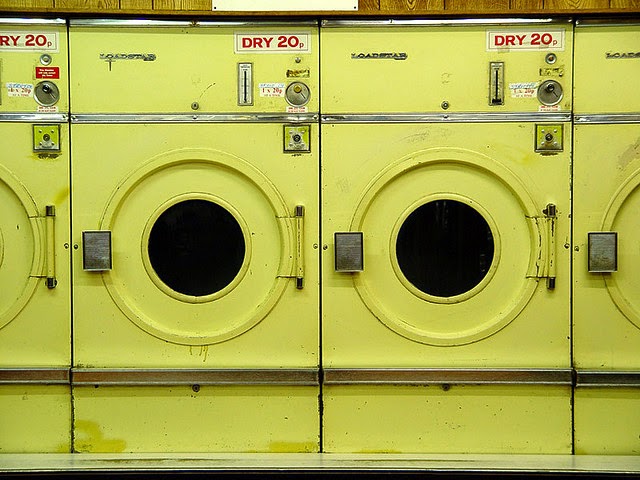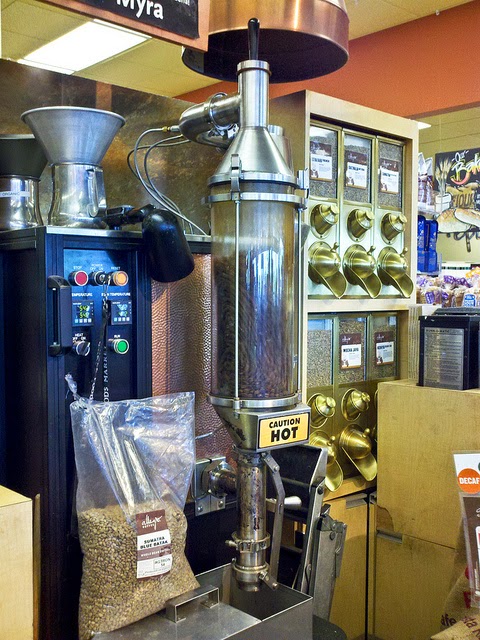The first thing we have to think about is the equipment: what are you going to use to roast coffee? It’s true that you can roast coffee anywhere there’s heat, but I’m about as likely to try roasting coffee in a dryer as I am trying to cook a turkey in one, even if does kind of resemble the real deal.
 |
| Innovation is not always a good thing. Picture by Damien du Toit is licensed under CC BY 2.0 |
A drum roaster is the most common type of roaster used in the craft coffee industry. They vary in size incredibly, from tiny, one pound tabletop test roasters to monsters that can roast a few hundred pounds of coffee at once. Generally a smaller batch means less inconsistency in the batch. They feature rotating drums that heat up to roast the coffee. They work through both convection and conduction, so some heat is transferred directly to the beans from the drum, but the air catches some of that heat, warms up, and helps roast the beans a little.
There are roasters out there that work exclusively by hot air. Some might have walked into a super market that roasts its own coffee to find something that looks like some kind of mechanical monster variety of a popcorn popper. Don’t trust those. Generally, the heating is uneven and the process automated.
 |
| Coffee is only kind of like popcorn, and this is just taking it too far. Picture by pchow98 is licensed under CC BY NC ND 2.0 |
That being said, if you want to try your hand at roasting coffee at home, there are worse things you could do than trying to do it with a popcorn popper. So many people have done it by now that it’s basically a science, and some people have gone as far as adding modifications to their poppers. Even if you have an old fashioned stovetop popcorn popper you can manage some decently roasted coffee.
There are other ways if you don’t have a popcorn popper or feel like owning one. The oven is popular, preferably with a perforated pan or something else that has a lot of holes in it—like a mesh colander. You could even go back to the old days and just roast in a cast iron skillet, but be ready for smoke. Like lots of smoke. Like ninja levels of smoke.
 |
| Just train your other sense and you'll be fine. Or turn the exhaust fan on, if you want to be lame. Picture by Martin Cathrae is licensed under CC BY SA 2.0 |
None of these methods are going to offer you the same quality you would get from a professional roaster. But this is more about process, adventure and bragging rights than making the best coffee in the world. So what’s stopping you? Go out, get some green beansand roast yourself some coffee.
